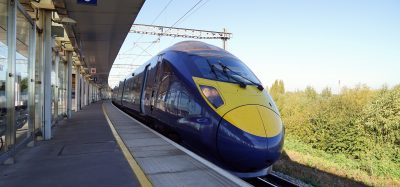Crucial breakdown repairs at DB Netz AG
Posted: 3 April 2007 | | No comments yet
Ensuring efficient breakdown repair management for DB Netz AG means the guarantee of availability of the track system around the clock, 24 hours a day, 365 days a year.
Ensuring efficient breakdown repair management for DB Netz AG means the guarantee of availability of the track system around the clock, 24 hours a day, 365 days a year.
Ensuring efficient breakdown repair management for DB Netz AG means the guarantee of availability of the track system around the clock, 24 hours a day, 365 days a year.
The following premises are consistently applied for this:
- Ensuring the maximum availability of the track system
- Introduction of assistance measures and support for the specification of operating measures provided that no immediate repair is possible
- Through presence throughout Germany, breakdown repair on track system appliances and immediate measures to continue operation are possible in less than 48 hours
In line with the reorganization of the breakdown repair management in the long-distance and conurbation network, the breakdown repair management was completely reorganized at the end of 2006.
The breakdown repair management in the network takes place through seven working areas, work preparation breakdown repair (AVE), which were set up in the operating centres of the branches or in their direct proximity. At the same time, the workplace breakdown repair coordinator was instructed in the network control centre in Frankfurt for extra-regional control. The aims of this decision prepared through the project ‘DB Netz AG control room’ were:
- The improvement of the breakdown repair process through continuous coordination with the network coordinators in the network control centre or with the network managers in the operating centres
- Adjustment by the hour of the number of breakdown repair managers to the actual fault signal amount
- Active fault accompaniment and assistance in operation-relevant faults
- General control of the resources for defined events with supra-regional significance
- Performance of high-quality reporting on actual fault cases, speed restriction points and track closure overranges
- Causal analysis of selected fault cases and processing of recommendations to avoid similar cases
- Setting up of a construction site crash management
First experiences confirm that the intended improvements following reorganization have been effective in the breakdown repair process.
Prioritizing faults
The faults were allocated to seven priorities. Priorities 1 and 2 represent the most stringent requirements of the breakdown repair personnel. Faults in priorities 3 and 4 are partly stackable in their remedying in accordance with the management posts. Priorities 5 and 6 enable breakdown repairs in many cases in systematic work shifts. Faults in priority 7 are one-off faults which generally do not require any special breakdown repair but with regard to repetition demand special observation.
Organization of breakdown repairs
Approximately 700 breakdown repair areas have been set up in accordance with the specialist domain at DB Netz AG for interference elimination. These are divided according to domains as follows:
- Track system: 166
- Control and safety technology (LST): 390
- 16. 7 Hz (contact line): 36 TVT wagons (contact line repair vehicles) breakdown repair areas including motor vehicle readiness for securing the TVT intervention time of 90 – 120 minutes plus 32 supplementary motor vehicles on-call in the network for securing the advance intervention time with a motor vehicle of 60 minutes
- 50 Hz: 68
- Telecommunication (TK): is completely covered through DB telematics
In order to always guarantee the required intervention time of 30 minutes (LST in priority network) to 60 minutes (other specialist domains on other routes), three models are applied in practice for breakdown repairs. These are as follows:
In large, operationally important centres (e.g. Berlin urban railway) a 24-hour occupation of the LST specialist domain is guaranteed. Beyond the elimination of faults, these employees are familiar with inspection and maintenance work, which however can be interrupted at any time without negative effects on the operation. The locations are chosen in such a way that the required intervention time of approximately 30-45 minutes is always reached and in most cases even undercut.
A second model of a two-shift operation from 6a.m. to 8p.m. with ensuing on-call readiness has proven its worth especially for the specialist domains of running track and LST. The start and end of shift can be aligned with the actual local conditions and requirements via the evaluation of the fault occurrence from the SAP R/3 network.
For regions that are not as troubled and with less fault occurrences, breakdown repair is realized through on-call readiness. It should be noted here, however, that this is the most expensive form of breakdown repair with major effects on the planning of work. For this reason, this readiness version is in decline.
Breakdown repair of contact lines represents a special case. The network-wide breakdown repair concept has been optimized within the ‘Further development of contact line maintenance’ project and is being successively further developed.
A fault with the contact line occurs relatively seldom and is especially characterized by the fact that the restrictions in general for normal operating procedure are enormous and the resumption of operability can only be attained via a track vehicle and accompanying crew of some 4-5 contact line specialists. The entire breakdown repair of the contact line appliances of DB Netz AG is carried out with 36 fixed TVT locations throughout the country in defined action radii. In addition, supplementary motor vehicle readiness teams are in place in the network to ensure the initial ‘track earthings’ measure for the defective contact line appliance. If necessary, the track earthing can be carried out in emergencies by emergency managers who have been instructed in track earthing and who in addition request the breakdown repair TVT defined as a breakdown wagon. Especially for major faults, extra-regional use of breakdown repair TVT is foreseen. This requires central coordination through the breakdown repair coordinators of the network control centre.
Breakdown repair material
Breakdown repair material is available according to the failure likelihood in the maintenance areas. Components and assemblies whose likelihood of failure is especially high are thus available, for example, in every signal cabin. Other components such as point mechanisms, large point parts, replacement tracks and so on are available as breakdown reserve in special stores or at central points in the maintenance location in defined type and number.
The contact line components that are principally required for primary breakdown repair are stored on the contact line repair vehicles (TVT) and carried at all times. Contact wire, other ropes and contact line auxiliary masts are stored on 25 contact line wagons and transported to the disturbance point when required.
Furthermore the supply of replacement materials is assured around the clock through DB’s own plants (Witten points works, Wuppertal signal works). This includes of course also the organization of logistics which is carried out via hauliers as well as transport with railway wagons. This ensures that important store materials can generally be made available throughout the country within 24 hours. Exact periods are also defined for the production of special parts (e.g. points parts for special constructions) which guarantee short-term delivery.
Breakdown repair materials which are not manufactured by Deutsche Bahn AG (e.g. cables) are made available through framework agreements. Here the counselling and ordering is arranged around the clock with transit periods of 24 hours for standard materials as well.
Special knowledge
Over 99% of faults are independently rectified by the specialist teams involved. For complex faults, especially in the specialist domain LST, special knowledge is however useful. As well as the use of the system provider’s (Siemens, Alcatel) hotlines, there are specialists available on demand for the persons responsible for the breakdown repair from DB Netz AG (specially commissioned operators, practice trainers, those responsible for particular models, repair specialists of DB Netz AG or DB Bahnbau GmbH or from the area of the central headquarters of DB Netz AG).
There are constant qualification measures for the persons responsible for the breakdown repair through
- Specialist training via practice trainers
- Breakdown repair training
- Targeted imparting of knowledge through special seminars
- Needs-orientated know-how transfer (accompanied learning) that ensure the required know-how for quick and breakdown repair management and are thus a decisive building block for a high availability of the track system
Reinforcement for faults
The development of breakdown repair management is continually monitored and checked for its effectiveness by the organizational unit ‘Maintenance of the long-distance and conurbation network’.
For especially relevant faults, a causal analysis is drawn up by the breakdown repair coordinators in the primary network control unit in collaboration with the branch establishments and the resulting recommendations for action and are then worked out and communicated. The recommendations for action can contain, for example, improvements in the process chain, the monitoring and further development of components through DB system technology (TZF), training measures for the breakdown repair monitors and suggestions for the planning of larger maintenance measures or investments.
In the working area reporting/quality management, the development of the fault occurrence is analyzed nationally and in relation to branches in the monthly quality reports. Central points here are the number of faults according to assemblies, fault repair times, intervention times and trend developments. Negative trends are questioned and countermeasures are arranged.
The development of breakdown repair management since 2000 has led to a considerable reduction of faults, repair times and intervention times with a simultaneous reduction of costs. It has also been possible to considerably reduce the delay times per fault occurrence. This is our active contribution to more quality and greater availability of the track system to the benefit of our customers.
About the author
Klaus Stahl is the Manager for Process Maintenance at DB Netz. He is a very experienced expert in railway maintenance and he joined the company in 1970 and did several jobs in regional districts of DB Netz AG, such as construction worker or district manager for railway maintenance. In the year 2000, he joined the DB Netz Head Quarters in Frankfurt and since 2001 he is the responsible manager for process design and operation of railway maintenance.






